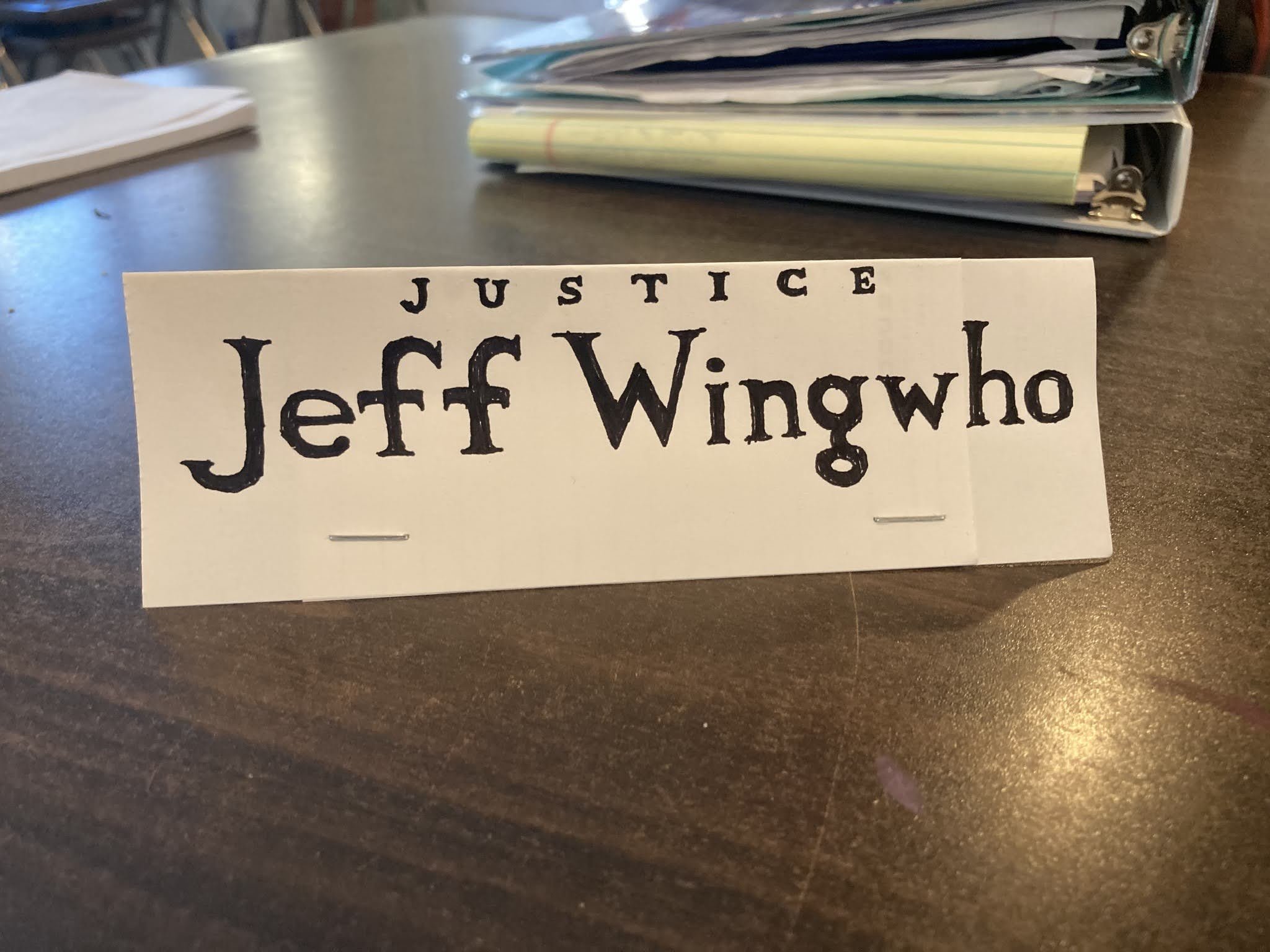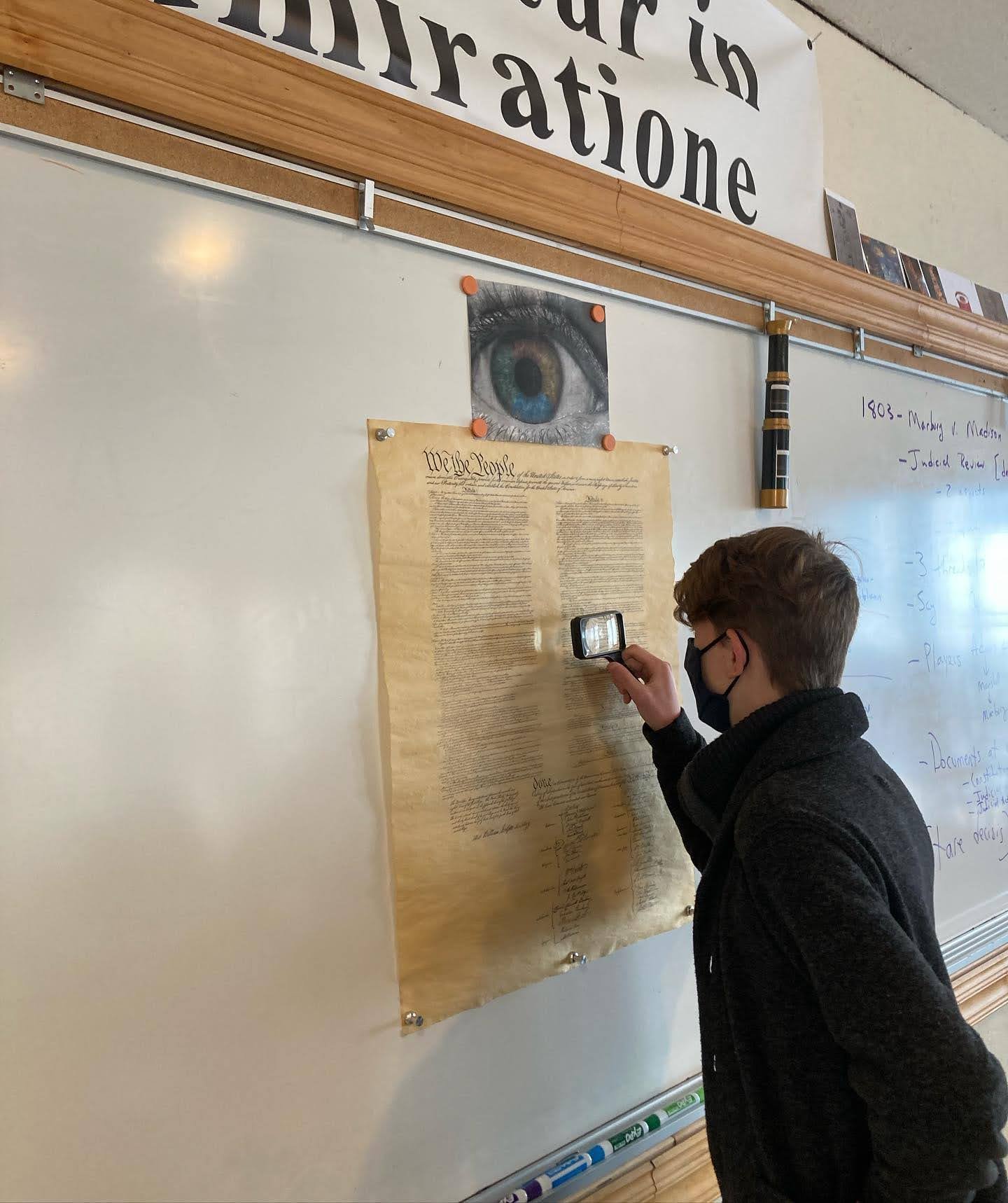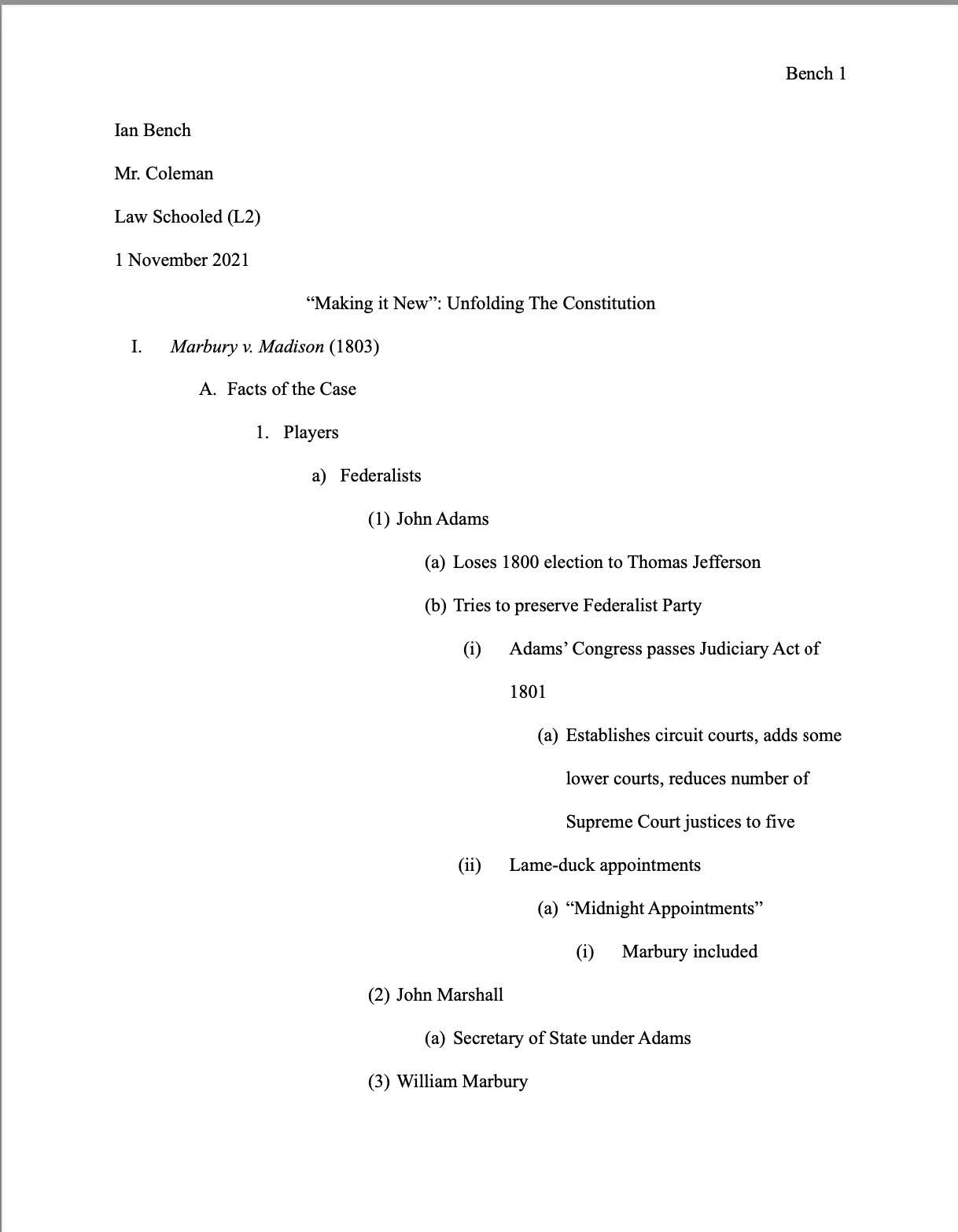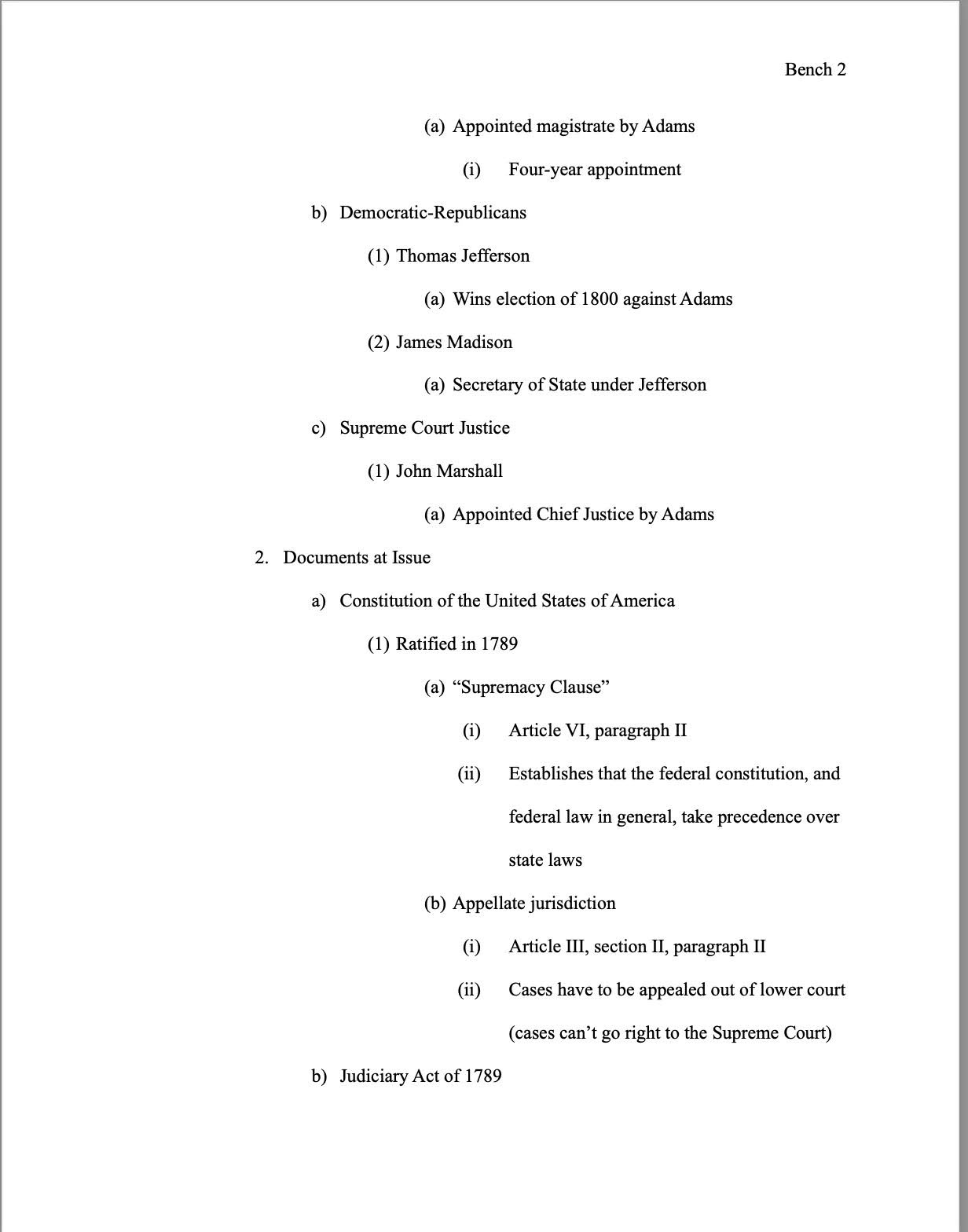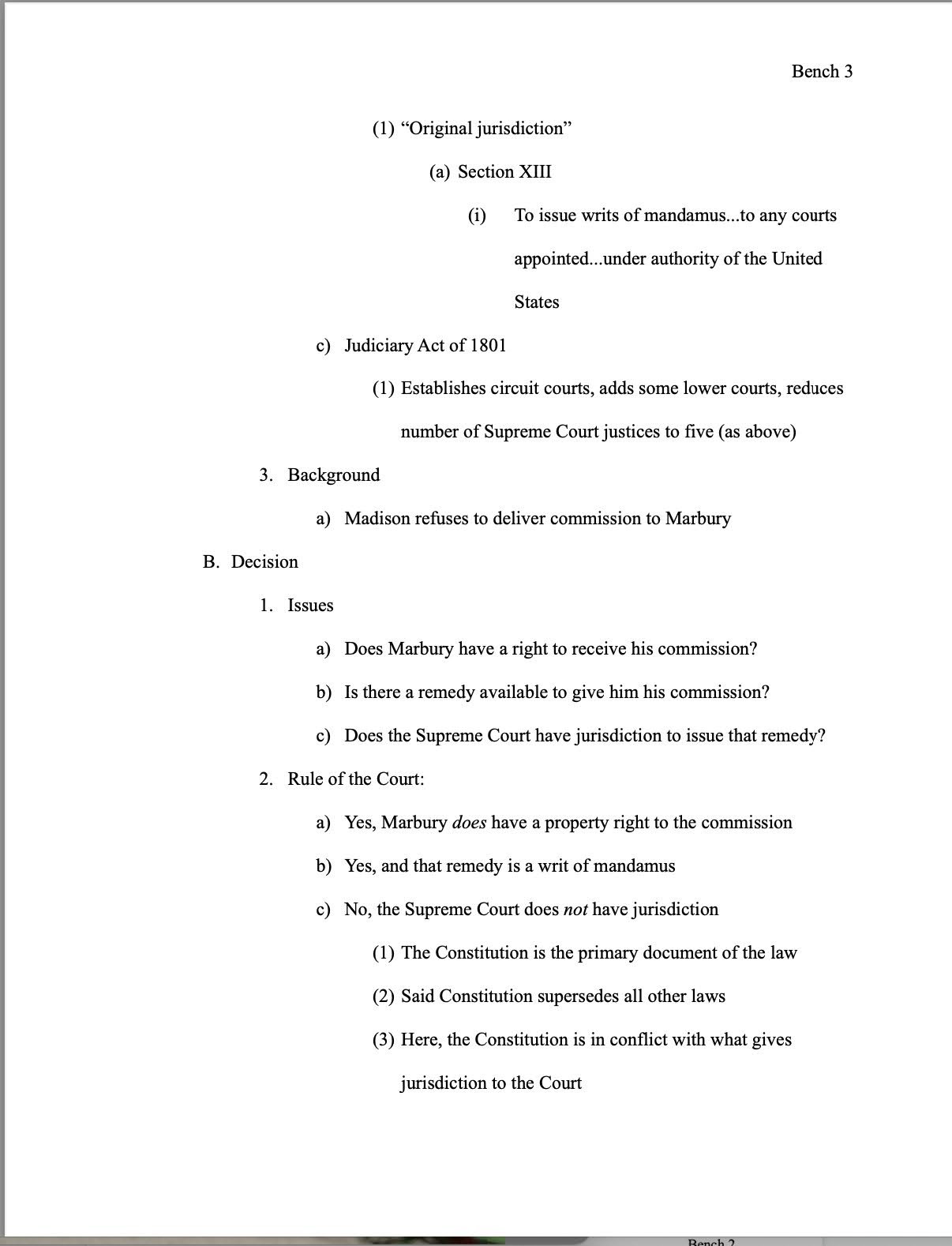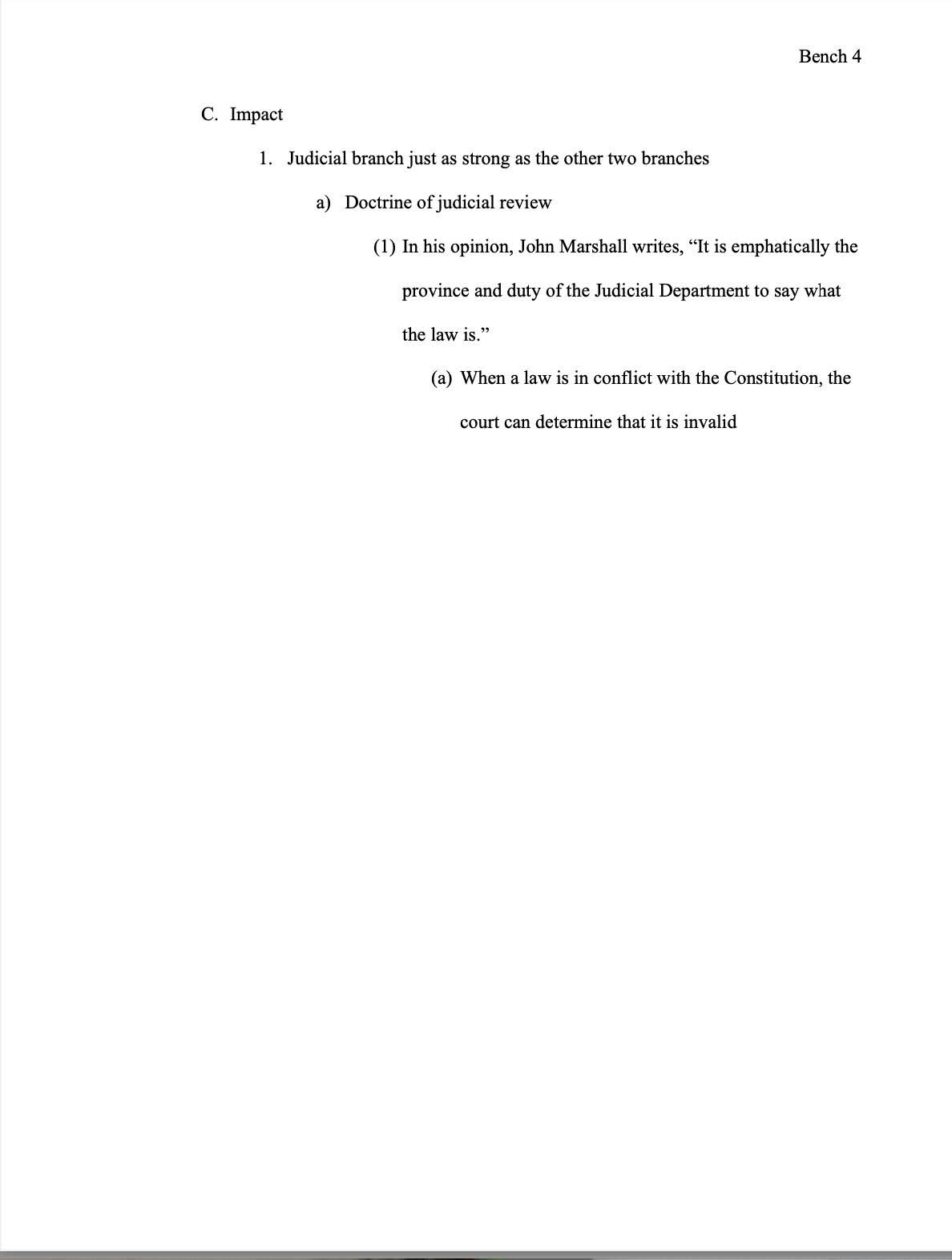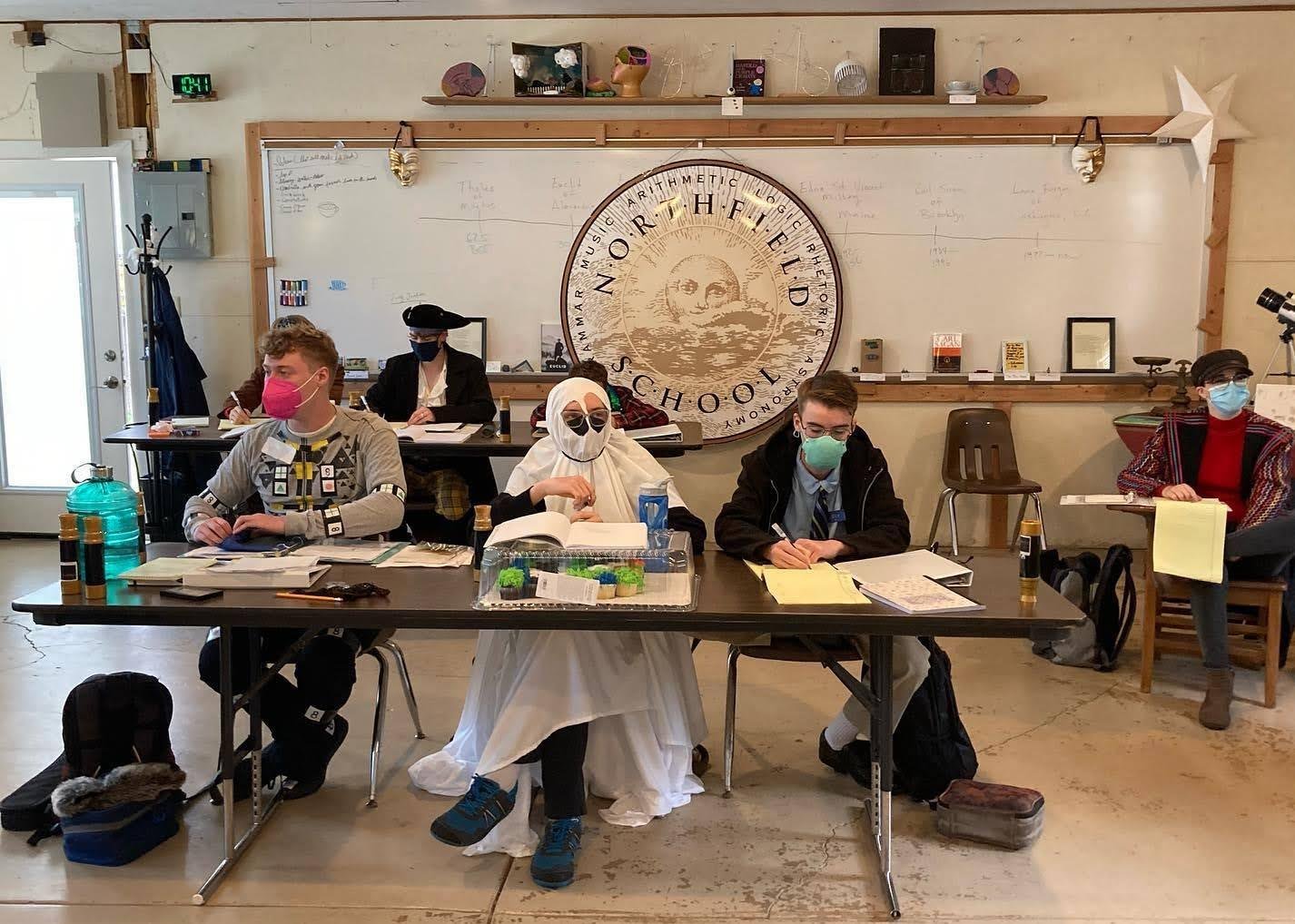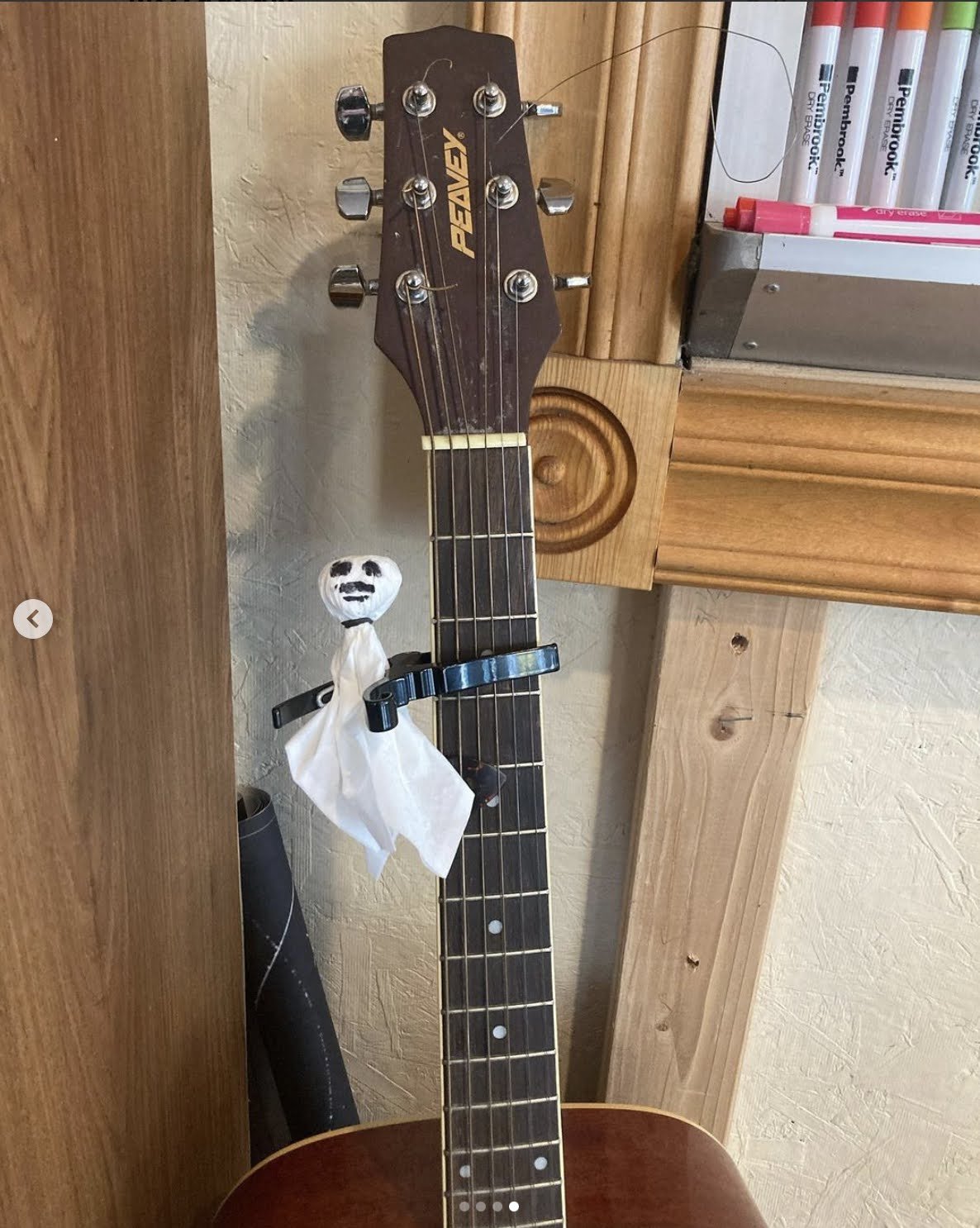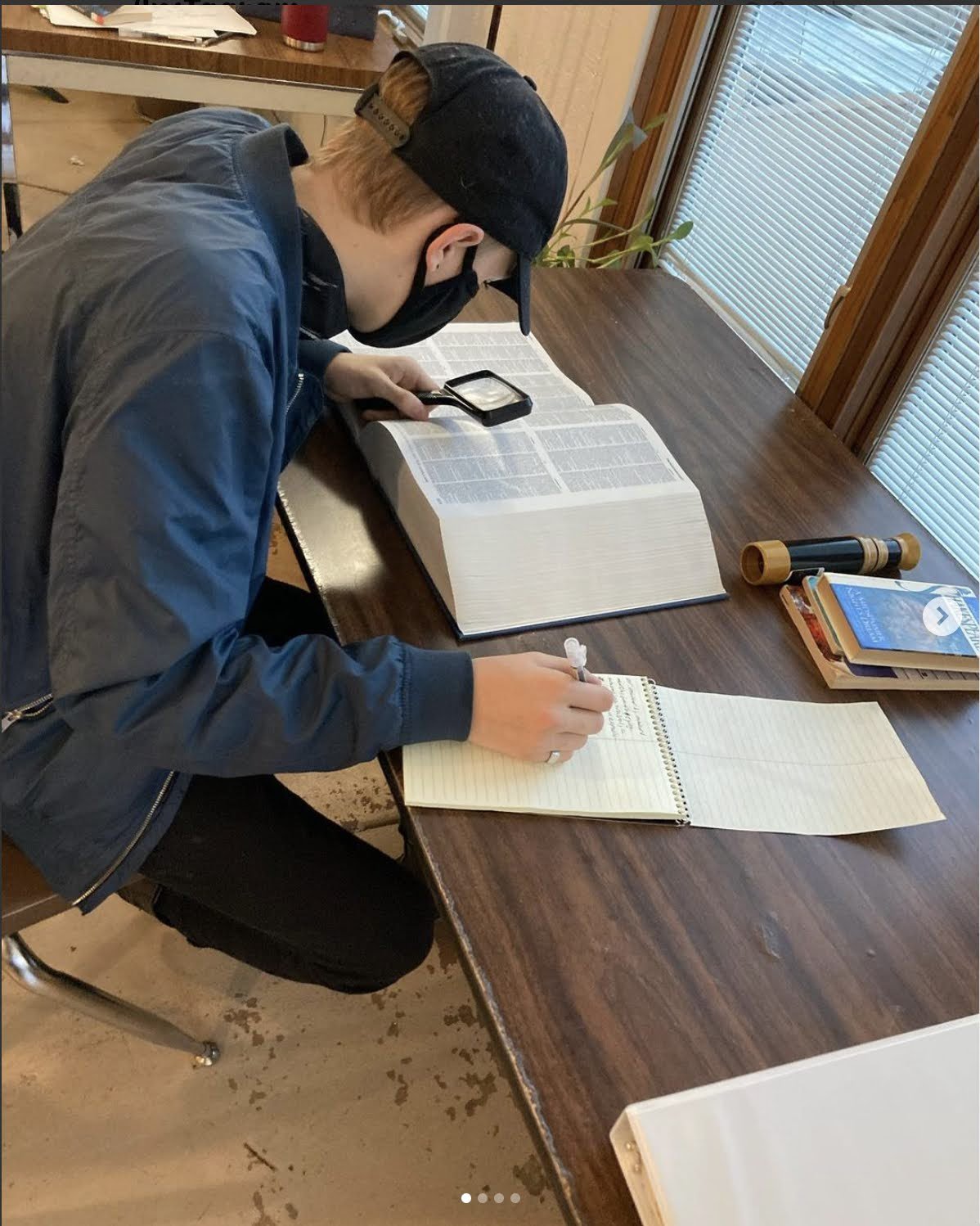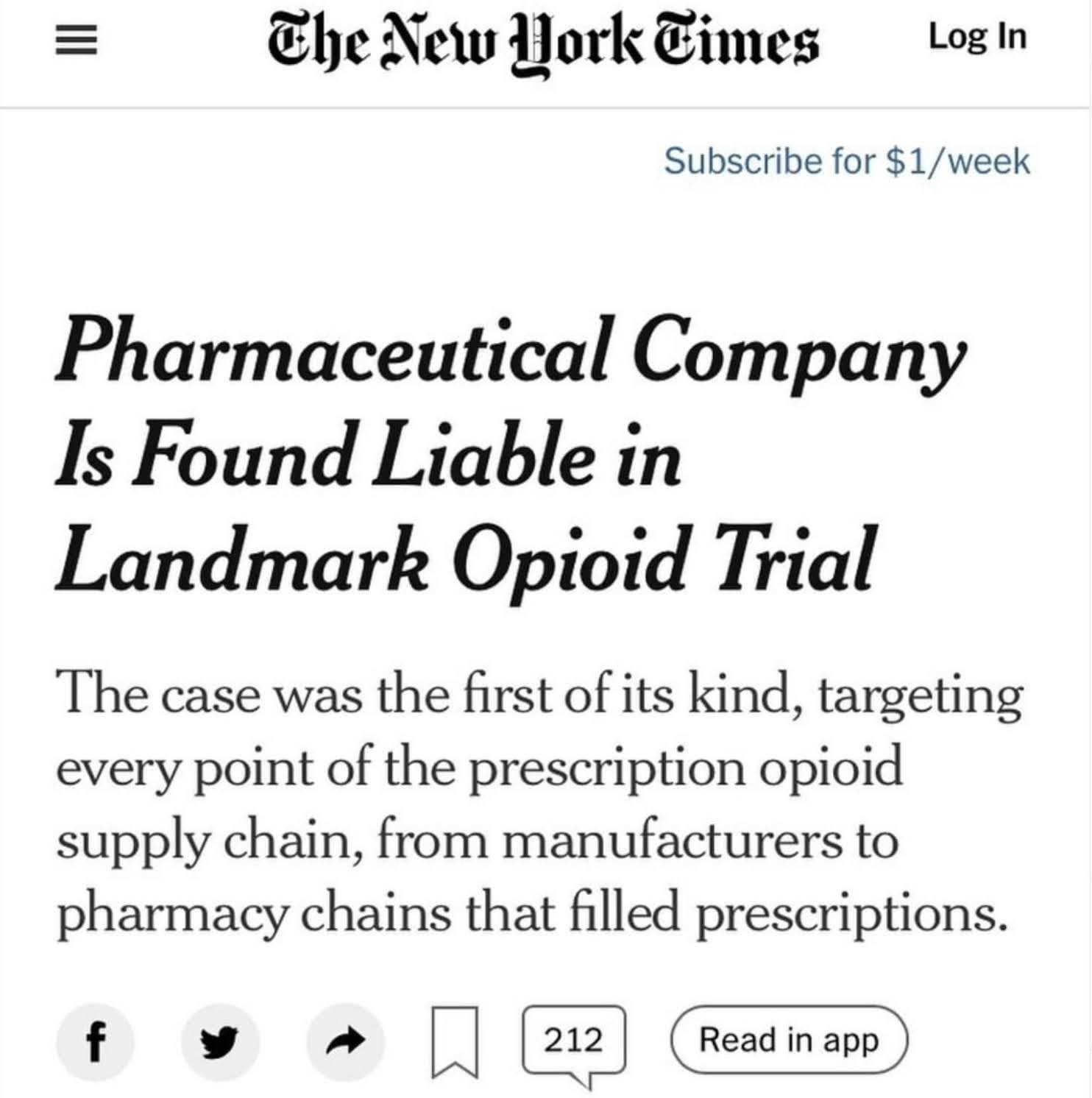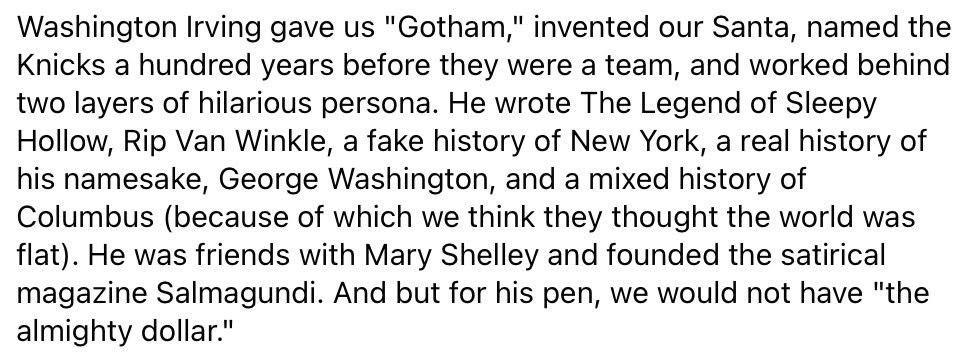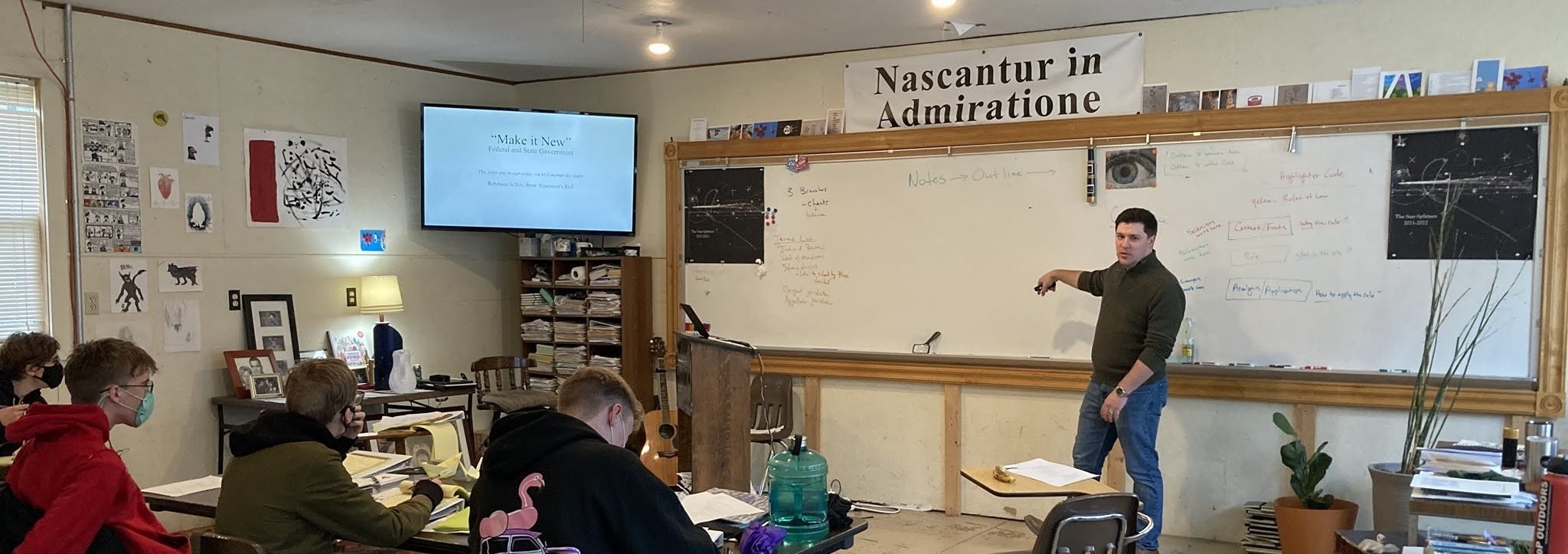2L: U.S. History Through Landmark Cases in Constitutional Law
Led by attorney Chris Yoder, this course looked at U.S. History through the lenses of landmark Supreme Court Cases.
Cases included Marbury v. Madison, which deals with the dynamics among branches of federal government; McCullough v. Maryland, which involves the dynamics between the federal and state governments; and three cases that deal with individual rights: Dred Scott v. Sandford, Plessy v. Ferguson, and Brown v. Board of Education.
(In a wonderful moment of Star-Splitter serendipity, Homer Plessy was posthumously pardoned by the governor of Louisiana the day after we outlined this 1896 case.)
Along the way, The Star-Splitters read a wealth of literature, kept a commonplace book, learned about logical syllogisms, took part in a two mock-court cases, and learned how to analyze arguments, how to translate notes into outlines and outlines into essays and presentations, and the ways in which literature, history, science, and the law live in deep relation with one another.
Students kept a binder containing a copy of the U.S. Constitution that they annotated, the outlines that they created for each landmark case, as well as their hand-written notes about logical syllogisms, the three branches of government, other aspects of the Constitution (such as expressed and implied powers, the Supremacy Clause, the Due Process clause of the 14th Amendment, etc.), and various historical influences and impacts, including the Missouri Compromise, the Reconstruction Era, and the War of 1812.
Throughout the deep-dive, students continued to practice the skill of outlining, including how to translate hand-written notes into type-written outlines, and how to translate those clear outlines into clear, well structured essays.
All of the above daily work culminated in a final, open-notes exam, in which students were able to freely use all of the contents of their binders in order to address questions and compose two essays.
Students also kept commonplace books, in which they reflected on given themes and how those ideas were developed and embodied in events or artworks or quotes that they encountered in everyday life.
We also read and discussed literature that intersected with the themes and/or historical time periods of the various landmark cases, including Washington Irving's "Rip Van Winkle," excerpts from Sophocles' Philoctetes and Shakespeare's Hamlet, and poems by Walt Whitman, William Stafford, Rudyard Kipling, and Robinson Jeffers.
We looked, too, at sociological studies that influenced decisions in the law, including the pioneering research of Mamie Phipps Clark and Kenneth Clark that helped the liberal artist Thurgood Marshall make his case in Brown v. Board of Education.
Students also served as jurors in the Whoville District Court case of Whoville v. Ginch, and then served as Justices of the Whopreme Court when the Grinch appealed that decision!
Today the Star-Splitters began deliberations in the case of Whoville v. The Grinch! The Grinch was charged with felony theft under a Crumpit [CR] state statute for stealing $850,000 of property from the residents of Whoville, CR. The state statute includes an exception which states that “if the theft resulted in self-betterment of more than 2 heart sizes in one day, and the defendant returned the property before being arrested, the provisions of this statute need not apply.” (The Crumpit state law may be in conflict with federal law, however!)
As jurors in Whoville District Court, the Star-Splitters heard oral arguments from Prosecutor J'Accuse You Lose Who and from The Grinch's Defense counsel, Oh, Boo-Hoo Who. They also heard conflicting witness testimony from sworn depositions and read an abstract from the peer-reviewed Crumpit Journal of Heart Research concerning cardiomegaly [abnormal enlargement of the heart], "a common occurrence among patients with previously diagnosed cardiac size restriction who have recently undergone a worldview-altering event, colloquially known as a 'change of heart.'" In their verbal deliberations and their written jury questionnaire answers, the Star-Splitters exercised their understanding of claims and support, issues of Constitutional law, and the evaluation of evidence. This is a tricky case! It might go to the Supreme Court, as early as tomorrow! [Huge thanks to Chris Yoder for inventing and writing the entire case, and to scientist Rachel Yoder for drafting the journal abstract, and to Sanda Moore Coleman and Madi Coleman for playing the prosecutor and the defense attorney, respectively.]
They jury read an abstract from the peer-reviewed Crumpit Journal of Heart Research concerning cardiomegaly [abnormal enlargement of the heart], "a common occurrence among patients with previously diagnosed cardiac size restriction who have recently undergone a worldview-altering event, colloquially known as a 'change of heart.'"
Relevant United States and Whoville case law and evidentiary rules that the jury considered in their delibneberations.
What a rollercoaster ride in the Whoville court system today! First, on behalf of the jury, the honorable Judge Hammer-Jammer Who laid down the law in the Whoville District Court case of Whiville v. Grinch, convicting The Grinch of theft according a federal statute and sentencing him to 43 months in jail.
The Grinch immediately appealed the ruling, ultimately sending the case to...
...The Whopreme Court!
In the case of Grinch v. Whoville, the fourteen Whopreme Court Justices tested the federal law against the Constitution, and found that it was at odds with the 14th Amendment's guarantee of due process regarding property rights. The court also cited the reasoning behind the 1803 Marbury v. Madison decision as a relevant precedent in this regard. Having struck down the federal law, the Whopreme Court ruled on how the case would have turned out under the original state statute, which explicitly carves out an exception for those whose acts of thievery "resulted in self-betterment of more than 2 heart sizes in one day" and who "returned the property before being arrested." Because the Grinch 1) experienced heart growth of over 2 sizes, and 2) returned the property before being arrested, the exception in the state statute applies to him, and the theft charge is dropped. The upshot: The Grinch walked!
Justices Jeff Wingwho [aka Ian] and Owl Who Who [aka Isabelle], as Co-Chief Justices on the court this year, wrote concurring opinions on the case
Justice Arora Who, with her well organized binder of Constitutional Law
Justice Finn Who, ready to apply the constitution to the law!
Star-Splitter Finn, investigating Article III of the U.S. Constitution, as we make our way through the landmark 1803 Supreme Court case, Marbury v. Madison.
Justice Oliver Who wants us to know that they are...
a "lawyer."
Students outlined each of the cases that we discussed. Here is an example: Ian's outline of Marbury v. Madison, which established the doctrine of judicial review.
Sophocles (via Seamus Heaney) wrote that once in a life-time, "the longed-for tidal wave / of justice can rise up, / And hope and history rhyme." We traced that wave through the hundred years that led from the notorious Dred Scott ruling, to the notorious Plessy v. Ferguson ruling, to the long-awaited, revivifying Brown v. Board of Education ruling, inspired in part by the profound work of liberal artist Thurgood Marshall.
The Star-Splitters learned about Brown v. Board of Education, including the pioneering sociological research of Mamie Phipps Clark and Kenneth Clark that helped the liberal artist Thurgood Marshall make his case. We learned together, then sang together.
Sometimes, after a rigorous morning session working through the intricacies of McCulloch v Maryland or Mayberry v. Madison or Brown v. Board of Education, some of the Star-splitters and Mr. Yoder and Mr. Coleman would spend part of their lunch working their way through Billie Eilish, CCR, and Gillian Welch!
A well earned standing ovation for Chris Yoder, who led the Star-Splitters in our deep-dive into U.S. History and Constitutional Law. (Chris came to Wichita and was in-person for most of the class, but had to Zoom in today. He is a Kansas-City based attorney at Baron & Budd, and a Northfield alumnus!)
This morning, Oliver and Isabelle came up with two different ways to visualize the validity of this syllogism: All bananas are crows. This harmonica is a banana. Therefore, this harmonica is a crow. *** Henry and Abby came up with two different ways to see how this syllogism didn't work, formally: All chocolate labs are brown. Duke the dog is brown. Therefore Duke is a chocolate lab.
On our last day of class before Halloween, a young man in a homemade motion capture suit, a pirate, a ghost, Blue Shirt Guy, Albert from an online escape room game, a giant pickle, Frankenstein’s Monster Being Abducted by Aliens, and many other wonderful creatures learned all of the intricacies of the Marbury versus Madison case from 1803.
On our last day of class before Halloween, a young man in a homemade motion capture suit, a pirate, a ghost, Blue Shirt Guy, Albert from an online escape room game, a giant pickle, Frankenstein’s Monster Being Abducted by Aliens, and many other wonderful creatures learned all of the intricacies of the Marbury versus Madison case from 1803.
On our last day of class before Halloween, a young man in a homemade motion capture suit, a pirate, a ghost, Blue Shirt Guy, Albert from an online escape room game, a giant pickle, Frankenstein’s Monster Being Abducted by Aliens, and many other wonderful creatures learned all of the intricacies of the Marbury versus Madison case from 1803.
Car-ghost Santana (courtesy of Oliver!)
Car-ghost Santana (courtesy of Oliver!)
Gideon, looking up the definitions and etymology of "Constitution" for his commonplace book.
Sometimes during our Star-Splitters deep-dive into Constitutional law, Mr. Coleman's co-teacher, attorney Chris Yoder, would have to step away to take a call, or formulate deposition questions, or strategize. He was working on several related cases at the same time. This was one of them. He and the firm where he works have won all of them so far, which will bring needed resources to communities that have been affected by the opioid crisis.. From today's New York Times (12/31/21):
A summary of one of Mr. Coleman's lectures on Washington Irving and "Rip Van Winkle," a story that intersects with the events and time-period of Marbury v. Madison. The day we started reading Washington Irving's Rip Van Winkle aloud, Oliver noted the similarity between Irving's sleeping time-traveler and Marvel's Captain America. Ian didn't miss a beat. “You mean Ripped Van Winkle?” he asked.
Some of Finn's class notes on checks and balances
Ian updated a meme to help us remember the U.S. government's system of checks and balances.
We are so glad our students got to learn from Mr. Yoder again this year, in our deep-dive on U.S. History and Constitutional Law. Christopher Yoder is a staff attorney at Baron & Budd. He works in their Opioid Litigation Group. He studied philosophy and English literature at Wichita State University, receiving a bachelor of arts in each. His family history of farming closely connected him to grassroots America, and he applied to law school hoping to advocate for those living in underserved rural areas by providing ready access to legal representation. While attending Washburn University School of Law, Mr. Yoder was a recipient of the Hansen Foundation Rural Initiative grant, which allowed him to gain experience practicing criminal defense in remote areas of western Kansas. This advocacy at such a hyper-local level in the farm community inspired in him a passion for representing those who struggle to afford legal representation that provides them with a sincere and powerful voice in the court system. Because of the great need for attorneys in rural areas, and the difficult barrier of entry for new practitioners, Mr. Yoder was motivated to found the Rural Practice Group at Washburn University School of Law to connect aspiring attorneys with established small-town lawyers and to give them a foothold in the community. He also plays jazz guitar and studies sustainable agriculture. Chris lives in Overland Park, KS, with his wife, Rachel, who is a cancer researcher, and their son, Caspian.
![Today the Star-Splitters began deliberations in the case of Whoville v. The Grinch!
The Grinch was charged with felony theft under a Crumpit [CR] state statute for stealing $850,000 of property from the residents of Whoville, CR. The state statute](https://images.squarespace-cdn.com/content/v1/629c3939c5c83923d705592a/c6abb41e-2c60-4583-8ef3-bbaa01075287/257567829_4553722348075728_950172892573985561_n.jpg)


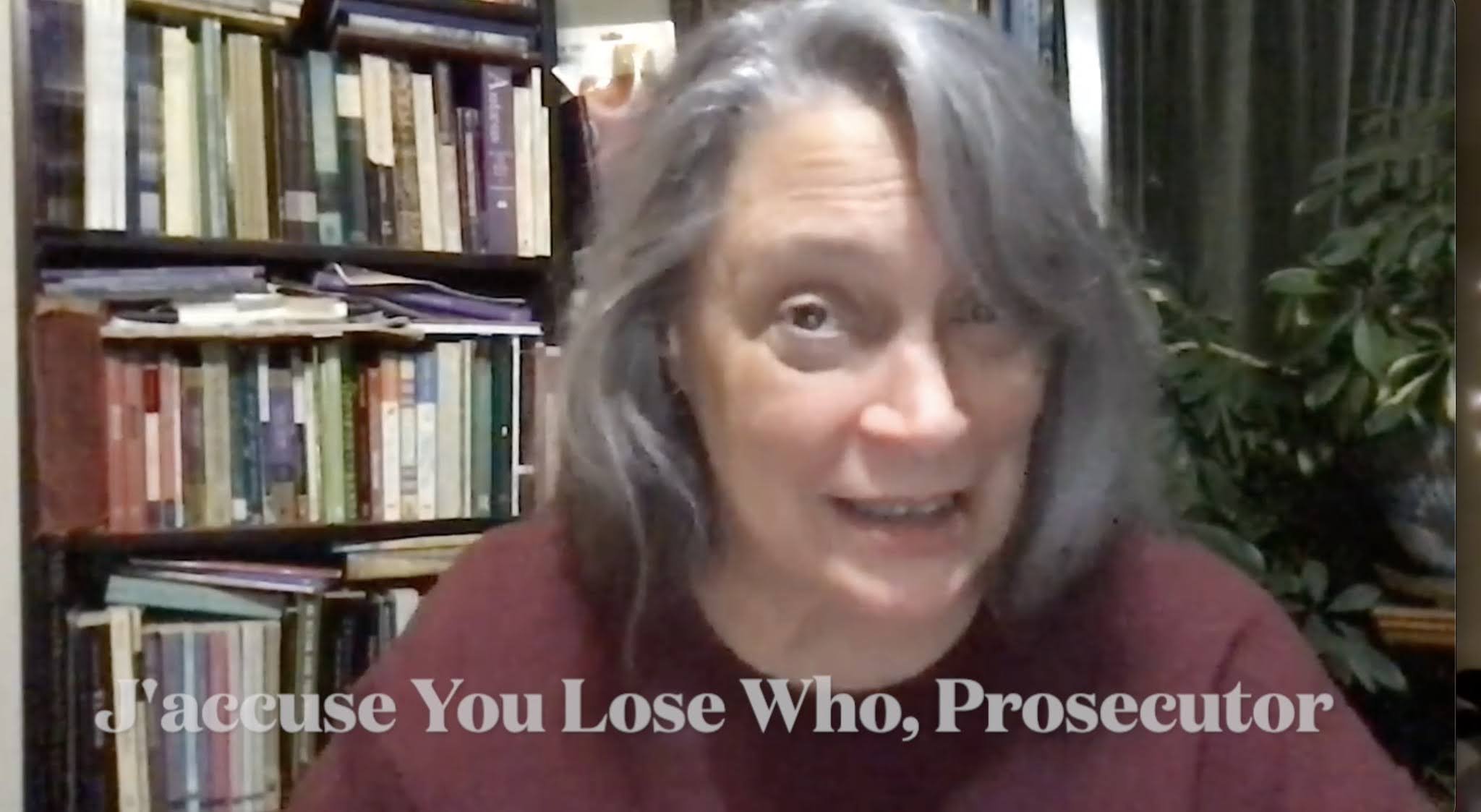
![They jury read an abstract from the peer-reviewed Crumpit Journal of Heart Research concerning cardiomegaly [abnormal enlargement of the heart], "a common occurrence among patients with previously diagnosed cardiac size restriction who have recently](https://images.squarespace-cdn.com/content/v1/629c3939c5c83923d705592a/f9eaa3ef-a607-42d2-af98-aa15f26c5a4b/258300819_4553820744732555_6814856956151902076_n.jpg)






![Justices Jeff Wingwho [aka Ian] and Owl Who Who [aka Isabelle], as Co-Chief Justices on the court this year, wrote concurring opinions on the case](https://images.squarespace-cdn.com/content/v1/629c3939c5c83923d705592a/ebc82b2a-efa7-4b3e-97d5-5e93fe80770a/248434940_4557011537746809_5094537372403456510_n.jpg)
